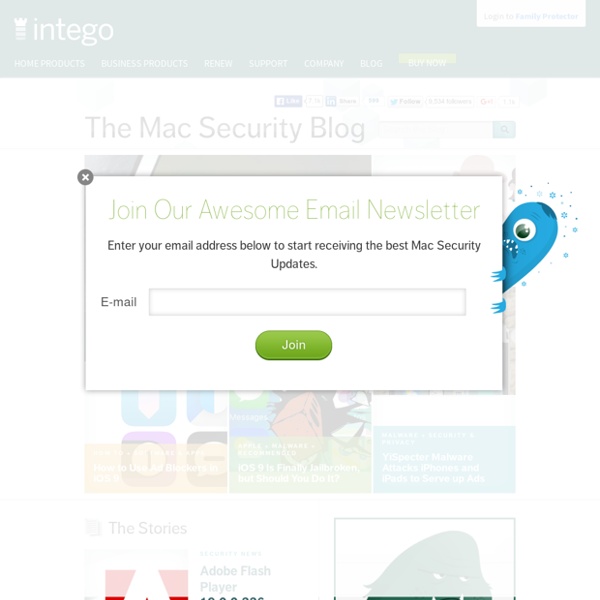The Mac Security Blog
Last Friday, Adobe Systems released an ahead-of-schedule update to resolve a widely known vulnerability... By Derek Erwin All businesses face cybersecurity challenges, which means proactively protecting organizational assets, employees and consumers... This month begins the 12th annual National Cyber Security Awareness Month (NCSAM), coordinated and... Apple has updated its XProtect.plist definitions file to version 2068, providing OS X with... The Apple Watch recently received its second major update, which patches a total of... Adobe Systems has released Flash Player 19.0.0.185 for Macintosh and Windows with patches for 23...
Understanding the Different Types of Mac Malware
Malware In the minds of most computer users, the term “computer virus” includes many types of “malware”, not all of which are actually viruses: Trojan horses and worms, for example, work in different ways, and do not always replicate like viruses do, yet most people tend to include them as part of the virus family. While these programs are malicious, and can seriously damage your computer and your files, they function differently. (Intego VirusBarrier X5 protects against all these types of malware.) A real virus is a small bit of computer code, or programming instructions, that can be executed, or run, on the type of computer it targets. A computer virus is a small program that acts like a parasite, living in a host file or program, that is capable of infecting files and applications, reproducing itself, and spreading to other computers through infected files and applications. Viruses that attack your system are among the most lethal. Trojan Horses Worms Macro Viruses
iTunes - iTunes Store - Podcasts - FAQ
What’s Next for Apple
I have no inside information or insight, but historically Apple’s product improvements have strongly broadcasted where they’re going in the future. Here are six things I think are inevitable for Apple to do over the next decade, from most to least obvious: maps, iCloud, payments, TVs, search, and cars. 1. Maps When the iPhone was first released Steve Jobs called Maps on iPhone the best version of Google Maps on the planet, with emphasis on what Apple’s designers had brought to Google’s raw technology (can’t find that link). Google Maps + Navigation on Android is my favorite mobile app of the past 3 years (haven’t used Siri yet) — it’s what Garmin should have built $8 billion in revenue and R&D ago. 2. iCloud They know this is best for consumers. 3. Your phone becomes your credit card. 4. I recently got one of the new Thunderbolt displays and man, a super-sized version of this would be killer in my living room. 5. 6. This is the most far-out, but I think most certain. Like this: Related
How Does Malware Naming Work?
Malware + Recommended I imagine there are some of you out there who wonder how companies come up with malware names. It can often be confusing, with different companies calling the same thing by completely different names. This guide will tell you, briefly, how we decide on names you’re most likely to encounter on this blog. (If you would like a much more in-depth look, check out CARO’s site.) Let’s take a recent malware named OSX/Imuler.D. If you were to look at the detection names across the industry, here’s some other names you would see for this file from various vendors: Trojan-Dropper:OSX/Revir.CBackdoor:MacOS_X/Imuler.COSX/Imuler.DOSX/Imuler-DOSX_IMULER.BOSX.RevirTrojan.Muxler.6 Kind of confusing, no doubt. Prefixes – What Does This Thing Do? You’ll see a fair number of the detection names start with a word like “Trojan,” “Backdoor” or “Dropper.” If the name starts with “OSX,” this is a way of stating what operating system the malware affects. Family Name – The Meat and Potatoes
Online Store
Related:
Related:



